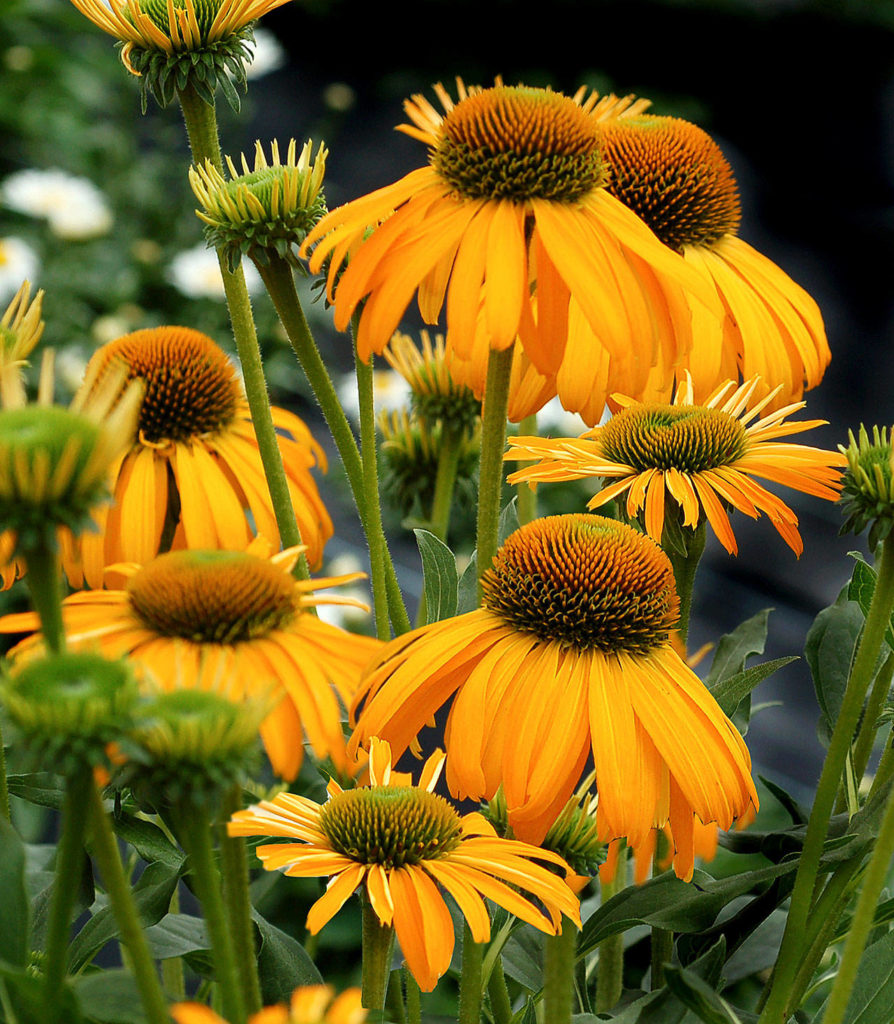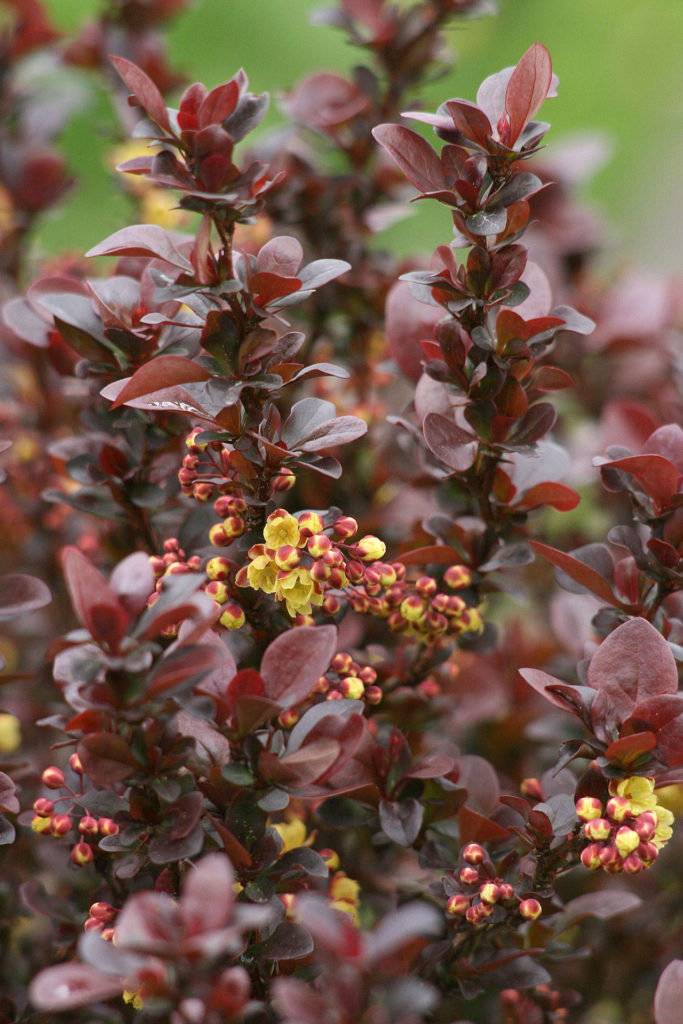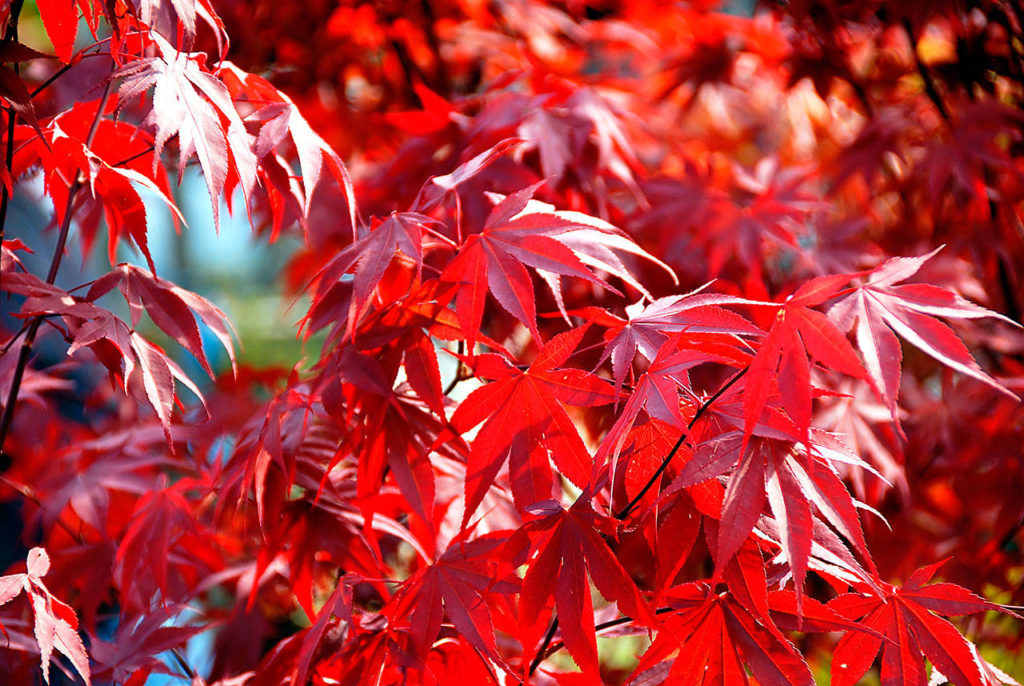Cool mornings bring a message of changing seasons on the way. After our record-breaking dry spell and heat, it almost sounds appealing.
Yes, autumn is just around the corner. Not to despair — fall brings a beauty of its own. Autumn is probably my favorite season of the year. The bright colors of summer flowers are finishing up and dandelions have stopped sprouting up in my neighbors lawn. (Of course, there are absolutely no dandelions in my yard.)
Who doesn’t love fall color in the garden? Many plants can bring bright, eye-catching colors into the garden, even when the summer show is winding down.
Joining some summer bloomers, such as black-eyed Susan, the autumn blooming asters and anemone hybrids infuse the late summer garden with a pleasing floral display. The real display in the fall garden, however, comes from colorful foliage.
Here are a few plants to try out in your garden for fall color.
Many of the Acer palmatum or Japanese maples offer spectacular fall leaf color. Acer palmatum “Osakazuki” has perhaps the most vivid fall color of any of the Japanese maples. The leaves turn an intense crimson color. For a smaller space, the laceleaf maples also offer blazing autumn colors. The contrast of these fiery leaves against an evergreen backdrop can be outstanding.
One of my favorite small trees for spectacular fall color is Oxydendron arboreum, commonly known as sourwood. This is a slow-growing tree, usually reaching 15 to 30 feet in height, with a rather pyramidal shape. The leaves are narrow and 5 to 8 inches long. This is a tree with several seasons of interest, making it a worthwhile addition to even a small garden.
Sourwood blooms in summer with slightly fragrant white flowers that hang down in long, drooping clusters. Autumn foliage is fiery orange, scarlet and/or dark burgundy — and often a mix of all of these. These dramatic-colored leaves stay on the tree for an extended amount of time. Clusters of silvery gray seed capsules hang on late into the winter.
Amelanchier x grandiflora “Autumn Brilliance” is a cousin to our native Western serviceberry (amelanchier alnifolia). Serviceberry offers white flowers in spring, followed by berries that provide food for birds. It may be best to plant serviceberry in a part of the yard where litter from the berries won’t be noticed. The blue-green leaves turn brilliant hues of crimson and orange in fall. This tree gets to a height of around 25 feet, making it a good choice for most residential landscapes. Providing three seasons of interest, it earns its place in the garden.
A tree that can be found featured in many arboretums is Parrotia persica. This slow-growing tree matures at 15 to 25 feet in height by the same width. It is naturally multi-stemmed, but can be trained to a single trunk for a more upright tree shape. Parrotia offers a long show of blazing fall color. The leaves turn golden yellow, then warm up to orange or rosy pink, finally heating up to a sizzling scarlet, which stands out boldly against gray skies.
Disanthus alternifolia is a large shrub, growing to 6 to 10 feet tall and wide with an open growth habit. It is a great addition to a woodland planting bed and will have good fall color, even in some shade. The leaves become infused with orange and gold, hinting at a warmth the rain cannot dampen. These leaves will turn brilliant red as fall progresses. As the heart-shaped leaves begin to fall, small flowers appear, adding to the seasonal interest.
Barberry (Berberis japonica) is often used in the garden for splashes of gold or burgundy foliage color during spring and summer, depending on the variety. As summer gives way to late September and October, the burgundies and oranges intensify and gleam in the late summer sun.
Many of the dwarf barberries, such as “Crimson Nugget” and “Orange Ruby,” have only very small thorns and, as such, have found a welcome place in my own garden. Try “Orange Rocket” barberry in a container or narrow space, and enjoy its fall fireworks.
Another shrub known for its excellent fall foliage color is Fothergilla, with a common name of bottlebrush, referring to the shape of its flowers. Fothergilla gardenia, or dwarf fothergilla, makes a nice addition to a small area. It can be grown in sun or part shade. In the fall, leaves of this plant show off bright oranges, yellows and scarlet, with all of these colors sometimes appearing in the same leaf. It can be quite the showstopper.
Many of ornamental grasses also put on a display of autumn color. Miscanthus sinensis purpurascens, known as flame grass, lives up to its name, turning vivid orange red to celebrate the arrival of fall.
As summer turns into fall, enjoy the warmth of colors in your garden.
Pam Roy of Planscapes is an award-winning landscape designer with more than 30 years of experience. Contact her via phone at 425-252-9469 or email at info@planscapesdesign.com. Go to www.plan scapesdesign.com for more information.
Talk to us
> Give us your news tips.
> Send us a letter to the editor.
> More Herald contact information.




























